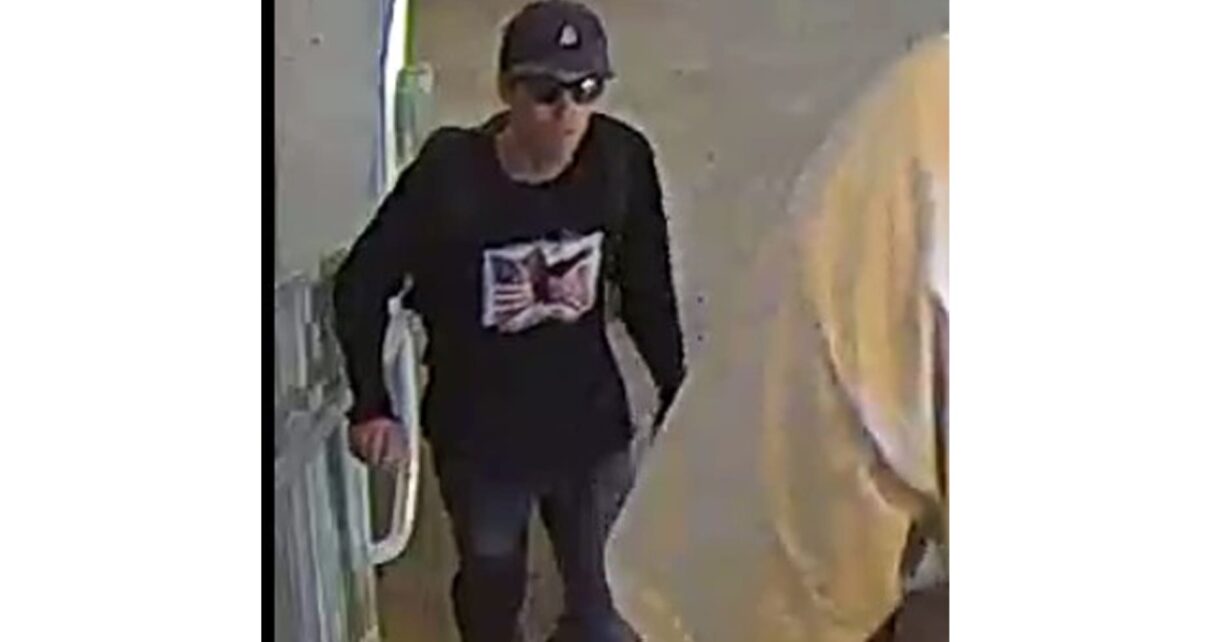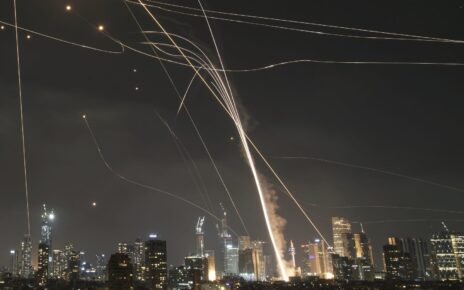A high-stakes investigation continues as federal authorities release imagery and new details about the person of interest in the fatal shooting of Charlie Kirk at Utah Valley University, with a substantial reward offered for information leading to an arrest. The case has prompted renewed calls for public assistance as investigators pursue key evidence recovered from the crime scene and seek to identify the individual responsible. Amid the ongoing inquiry, officials emphasize that many questions remain, even as they catalog forensic findings, timeline specifics, and prior detentions related to the incident.
FBI and Public Appeal for Help
The Federal Bureau of Investigation has publicly released two photographs depicting a person of interest connected to the shooting that killed Charlie Kirk during an event at Utah Valley University in Orem, Utah. The images show an individual wearing a black long-sleeve shirt, dark pants, sunglasses, and a hat. In a formal outreach, the FBI stated that it is asking for the public’s help in identifying this person of interest in relation to the fatal shooting at the university.
In conjunction with the release of the photos, the FBI’s Salt Lake City field office communicated a clear message: the agency is seeking information from the public that could lead to identifying the person of interest and, ultimately, to the arrest of those responsible for the crime. This appeal underscores the ongoing nature of the investigation and the reliance on eyewitness accounts and public tips to advance the case.
Separately, authorities announced a substantial reward, offering up to $100,000 for information that contributes to identifying and apprehending the shooter. The reward reflects the seriousness of the case and the federal effort to secure actionable leads that can move the investigation forward.
This public appeal and reward announcement came after law enforcement officials disclosed that important evidence had been recovered in the hours following Kirk’s assassination. The materials recovered include a rifle and video footage described as “good,” which collectively may prove pivotal in understanding the shooter’s identity, movements, and method of operation on the university campus.
Details released at the time by FBI agent Robert Bohls, who serves as the special agent in charge of the FBI’s Salt Lake City field office, indicated that investigators found a high-powered, bolt-action rifle in a wooded area near the location where the gunman fled after the shooting. The discovery of this weapon, along with other physical evidence, is being analyzed to determine its connection to the crime and the identity of the shooter.
In addition to the firearm, investigators have collected several forensic items—namely a footwear impression, a palm print, and forearm impressions—for analysis. Bohls noted these items as part of the ongoing forensic work designed to build a comprehensive case and to narrow down potential suspects. He emphasized that investigators are still assessing how far the shooter may have traveled before leaving the area.
Utah Public Safety Commissioner Beau Mason added that there is “good video footage” of the individual involved, though authorities have stated they will not release that footage at this time unless the investigation fails to identify the shooter independently. Mason’s remarks highlight the tension between maintaining investigative security and sharing information with the public to aid in identification.
Evidence Recovered and Forensic Findings
The investigation has progressed with the recovery of a high-powered bolt-action rifle found in a wooded area adjacent to the crime scene. The FBI’s confirmation of this weapon emphasizes its significance in reconstructing the event and could be central to establishing a link to the shooter’s movements and actions on campus.
In parallel, investigators have secured multiple forensic artifacts that may contribute to identifying the perpetrator. The footwear impression, palm print, and forearm imprints are undergoing laboratory analysis, with experts attempting to correlate these traces with individuals who may be connected to the crime. These kinds of forensic leads often play a crucial role in matching physical evidence from the scene to potential suspects or individuals of interest.
Agent Bohls acknowledged the challenges inherent to the case, including uncertainties about the extent of the shooter’s flight path. The statements underscore that, while evidence is being collected, investigators are still piecing together the exact sequence of events from the moment the gunman opened fire to his ultimate escape. The forensic work, combined with video and eyewitness accounts, forms the backbone of the investigation as authorities strive to reconstruct the incident with precision.
Video footage has been described as a valuable resource in the probe. Although officials have indicated that the public will not receive this footage immediately, the material remains under analysis and may offer crucial context about where the shooter went after the attack and how he approached the campus location where Kirk spoke.
Suspect Behavior, Appearance, and On-Campus Timeline
Law enforcement officials have provided descriptions that help frame the suspect’s presence on campus and potential behavior patterns observed during the incident. Commissioner Mason noted that the individual appeared to blend in with the college environment and is believed to be of college age. This characterization suggests the shooter sought to minimize attention and integrate into the campus setting, a detail that has implications for public safety and the ongoing search.
According to official accounts, the gunman arrived on campus shortly before noon local time. From that vantage point, he moved to a rooftop overlooking the location where Charlie Kirk was speaking, indicating a choice to gain a vantage point from which to execute the attack. After firing, the shooter transitioned to the opposite side of the building and then jumped off, fleeing into an off-campus neighborhood. This sequence highlights a planned approach to the attack and a deliberate attempt to escape unnoticed in a populated area.
The authorities have not released a complete description of the shooter’s clothing beyond the initial photos, but the images released depict attire consistent with a discreet, low-profile appearance. The emphasis on concealment aligns with the broader investigative goal of identifying the individual by cross-referencing physical evidence with potential surveillance footage and witness accounts.
Detentions, Leads, and Ongoing Investigation
In the aftermath of the incident, officials announced that two persons of interest had been detained shortly after the shooting. However, updates from the Utah Department of Public Safety indicated that there are currently no ties between those individuals and the shooting. The department stressed that the investigation remains active and that a manhunt is underway for the shooter.
The process of evaluating potential connections between detained individuals and the crime is a critical step in ruling out false leads and ensuring that resources are directed toward credible avenues of inquiry. Authorities indicated that the presence of detentions does not imply a resolution to the case; instead, it reflects the ongoing, exhaustive nature of the investigation as it explores multiple angles and contexts surrounding the incident.
Details about the shooting itself indicate that the gunman fired from a campus building approximately 200 yards away from where Kirk was addressing the audience, striking him in the neck. The distance underscores the shooter’s deliberate positioning and the potential severity of the attack. Investigators are likely examining the trajectory, vantage point, and environmental factors that could inform both the weapon’s use and the shooter’s intent.
Reactions, Official Statements, and National Attention
The shooting drew immediate attention from political figures and national observers. Charlie Kirk, a prominent conservative political activist, was pronounced dead following the attack, prompting public statements from across political divides. The incident occurred amid heightened scrutiny of campus safety and the security of public events on university campuses.
Among the national responses, former President Donald Trump publicly honored Kirk, praising him as a “truly Great American Patriot.” In another related development, Trump indicated that he would posthumously award Kirk the Presidential Medal of Freedom during an observance marking the 24th anniversary of the September 11 attacks. These remarks reflect the political resonance of the incident and the broad spectrum of reactions it elicited.
In the ongoing process, corrections were issued to clarify details of the case. Specifically, it was confirmed that Robert Bohls is the special agent in charge of the FBI’s Salt Lake City field office; an earlier version contained an incorrect statement about the location. This correction underscores the importance of precise attribution in authoritative statements amid a fast-moving investigation.
Case Context, Police and FBI Coordination, and Next Steps
The collaboration among federal and local authorities underscores a broad, coordinated approach to resolving the case. The FBI, along with state and local law enforcement, is consolidating evidence, verifying timelines, and analyzing forensic material. As part of the process, investigators will continue to pursue leads, review surveillance footage, and cross-reference the physical evidence gathered at the scene.
Public safety officials emphasize the ongoing nature of the investigation and the importance of community cooperation. The reward remains in effect to incentivize information that could pinpoint the shooter’s identity and whereabouts, thereby enabling authorities to make an arrest and secure accountability for the crime. The public is urged to report any information that could assist investigators, whether it pertains to sightings, tips about the vehicle or suspect, or any other relevant detail.
While the investigation progresses, authorities remain cautious about sharing sensitive information, including video footage, to preserve the integrity of the case and ensure that investigators can verify tips without compromising the investigation. The combination of forensic work, eyewitness accounts, surveillance analysis, and the public tip line will inform the next set of investigative steps as authorities strive to close the case.
Conclusion
The killing of Charlie Kirk at Utah Valley University has prompted a comprehensive federal and local investigation, including the release of two photos of a person of interest and a substantial reward for information leading to an arrest. Investigators have recovered a high-powered rifle, video footage, and multiple forensic items that will undergo analysis to support the pursuit of the shooter. The suspect is described as blending in with a college environment and appearing to be of college age, with footage suggesting a rooftop vantage point prior to the attack and a rapid escape afterward.
Two individuals of interest were detained but later reported to have no current ties to the shooting as the manhunt continues. The gunman fired from a campus building roughly 200 yards away, striking Kirk in the neck and ending his life. In the wake of the tragedy, President Trump publicly commended Kirk as a “truly Great American Patriot” and signaled plans for a posthumous Presidential Medal of Freedom. A correction clarified the FBI leadership attribution to Robert Bohls, the special agent in charge of the Salt Lake City field office.
The investigation remains active, and authorities caution that new information could emerge as forensic analysis progresses and additional evidence is reviewed. As the case develops, officials reaffirm their commitment to transparency within the boundaries of an ongoing inquiry, and they reiterate the importance of public cooperation in identifying the perpetrator and delivering accountability. Readers are encouraged to stay with official briefings for updates as the investigation advances and new details come to light.



